Mulch over small amounts of fall leaves and they will break down over Winter and Spring and add organic matter to your soil. Large amounts of fall leaves should be shredded before being added back to garden beds as mulch or added to a compost bin to break down and turn into humus.
How to mulch over leaves
Decide if the layer of mulch leaves is thin enough to layer mulch over. If you can see through to the soil or old mulch layer through the layer of leaves, you can add mulch straight on top. This layer of leaves will be thin enough to break down with your bark or straw mulch and mix through the soil.
Add a layer of bark or straw mulch over your garden beds including the fall leaves to around 2-3 inches include the leaf layer. Leaves will break down even if they are not shredded if they are in a thin enough layer.
Water the mulch in with your hose to let it settle into place and start to mix with the leaves. The leaves will break down with the mulch stopping weeds and adding carbon to your soil.
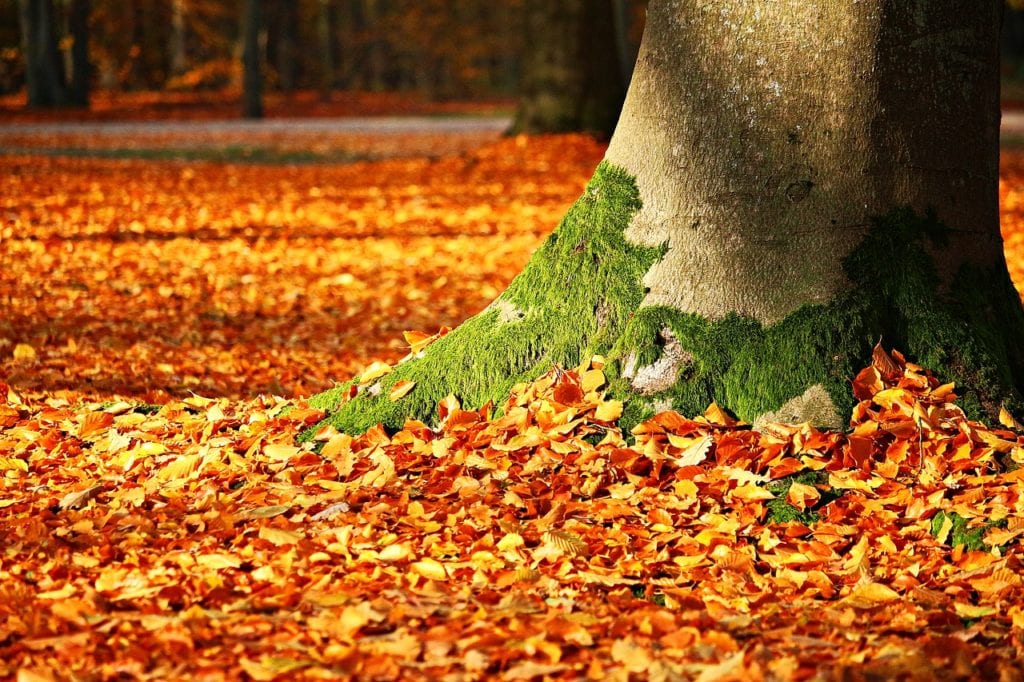
When to remove leaves from flower beds
Fall leaf layers so thick that you can no longer to see through to the soil or mulch should be raked up and shredded first. Don’t worry if you have left a light layer of leaves on top of your garden beds, just layer mulch on top.
The rest of the leaves can be shredded using a lawn mower or added whole to a compost bin or leaf cage. Check out my previous article here: Mulching with Leaves: An Easy Guide.
Thick layers of fall leaves should be raked up as they can form mold or fungus and turn the soil underneath anaerobic. They can get wet and soggy and may look unattractive on your garden beds.
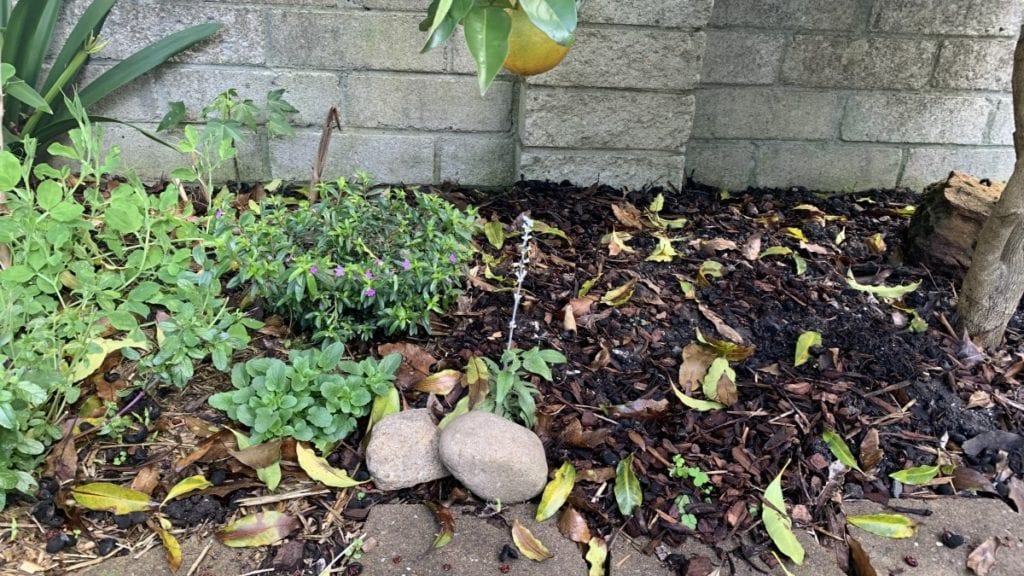
Removing leaves from flower beds in Spring
Fall leaves that are still sitting on your flower beds by Spring can be raked up and placed in your compost bin. Leaves that have not broken down by Spring will break down quickly if added to your compost bin.
If the layer of leaves left on your flower beds is light, mulch over the top with tree mulch or bark mulch. This will cover over the leaves and allow them to break down naturally. Soil bacteria will digest the leaves, releasing the nutrients in the soil.
Worms will come to eat the soil bacteria and aerate your soil.
Using whole leaves as mulch
Whole leaves can be left on top of garden beds as mulch if you can still see the soil or mulch layer underneath. Cover whole leaves with a new layer of bark mulch or straw. This will hold the whole leaves in place and add a diverse mix of nutrients to feed soil bacteria.
Mixing fall leaves and bark mulch is a great way to boost the nutrient mix of your mulch as fall leaves will contain a range of nutrients and microbes. As this is broken down and mixed into the soil, your plants and soil will benefit.
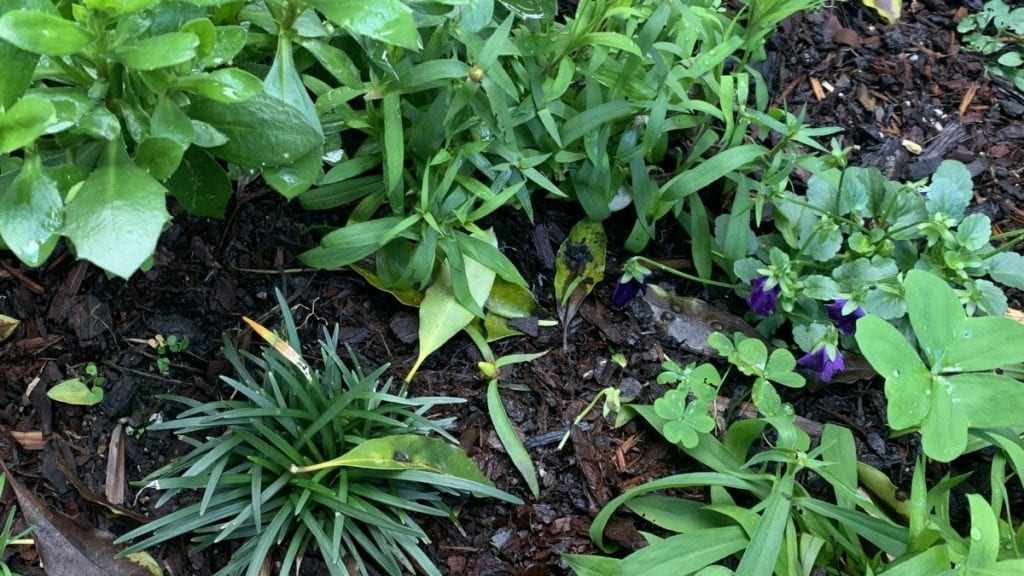
Benefits of mulching on top of leaves
Leaves left on top of your garden beds will break down quickly and add organic matter to your soil. Organic matter helps your soil to hold water adds extra depth to your mulch to stop weeds and diversifies your soil microbe life.
Leaves will add extra air pockets to your mulch mix which will help all the ingredient to break down quicker and avoid mold.
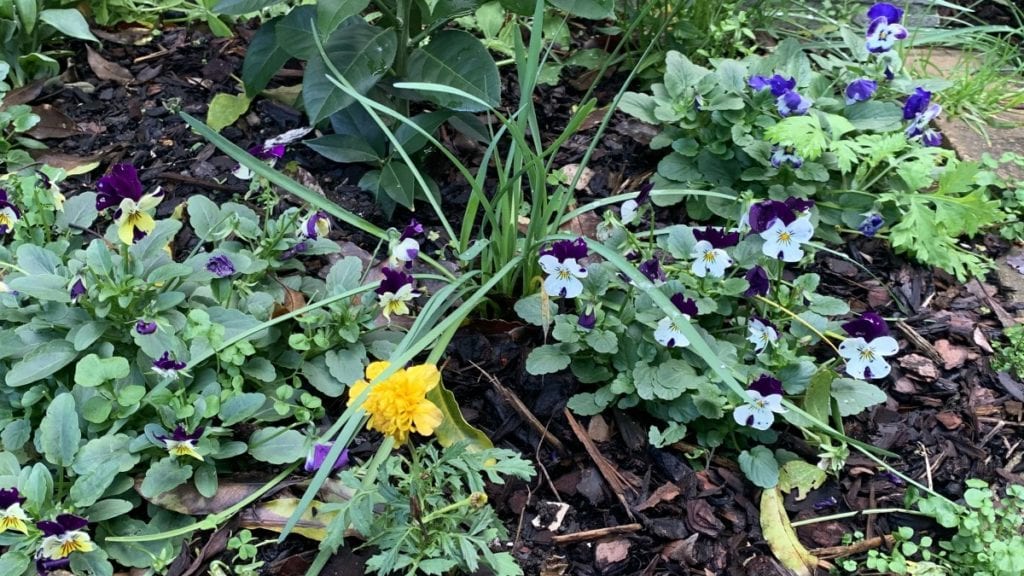
Mulching over dead leaves
Dead leaves contain a range of nutrients which will be digested by soil bacteria and released to your plants when you mulch over them. When fall leaves drop from the tree, they can be a range of colors from yellow, red, orange or brown.
Each color represents a different nutrient range and can include a mix of nitrogen, phosphorus and potassium as well as trace elements such as magnesium and calcium. A range of colors means a range of nutrients for your soil.
Mulch over these dead leaves and help the soil microbes to break down both the mulch and the leaves. This will store carbon in your soil and improve it over time.
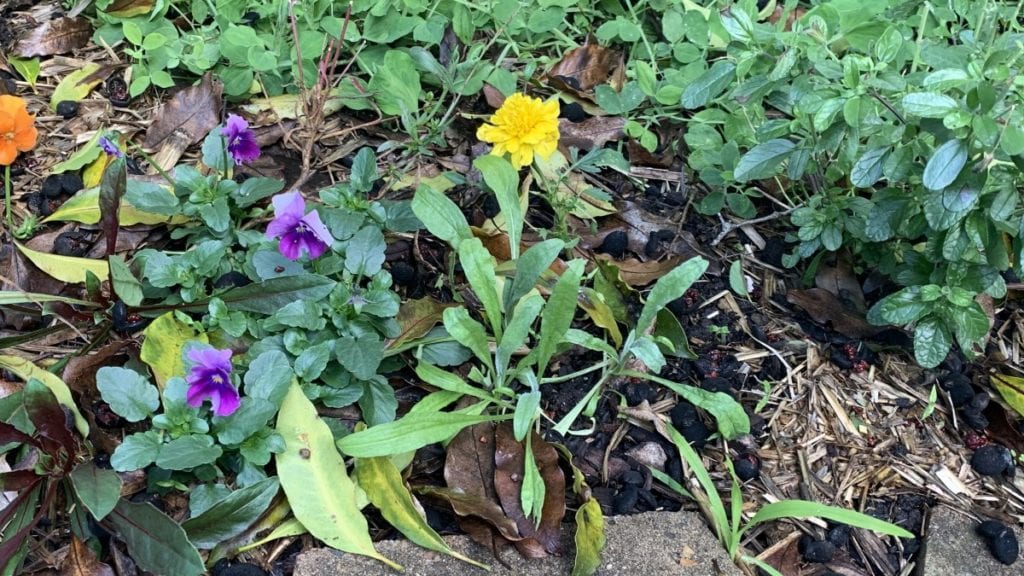
Putting leaf mulch around plants
Whole leaves can be left around plants with new mulch placed over the top however leaves work best as mulch when shredded. For large amounts of fall leaves, rake them into an area and mow over the leaves to shred them.
Another great way to shred leaves is to use a leaf blower with a mulch function. Leaves can be sucked up and mulched directly into a collection bag. Put the leaf mulch around your plants to stop weeds, improve the soil and stop soil moisture from evaporating.
Mixing dead leaves through soil
Dead leaves work best when left on the soil surface to be used as mulch rather than mixing them through the soil. If dead leaves are mixed through the soil, they can temporarily lock up soil nitrogen as soil bacteria absorb the nitrogen to break down the leaves.
Leave a light layer of leaves on the surface of your garden beds and add another of mulch to reach a depth of 2-3 inches. This is the amount of mulch needed to stop 99% of weeds and keep soil moisture in while still letting rain through.
How much leaf mulch is too much for garden beds?
Leaves that form a full cover over the garden bed so you no longer can see the soil or mulch beneath is too much. Remove the leaves so you can see through to the layer beneath. The leaves can then be topped up with fresh mulch to hold them in place.
Mulch over dead leaves – FAQ
Leaves work best as mulch when shredded as they will break down quicker, allow air and water to move through and mix with other mulch layers better. You do not need to shred the leaves if they form a thin enough layer to see through. Top with fresh bark mulch and they will break down by the next Spring.
Clean fallen leaves from flower beds if they form a thick layer or start to cover your plants. Large amounts of fall leaves can block the light from small annual flowers or shrubs if they land on the leaves. This can quickly kill small or young plants as they can no longer photosynthesize.
Small amounts of fallen leaves can be left on flower beds and covered with fresh mulch. They will break down and improve the soil.
Dead leaves will naturally fall off plants but larger leaves that have turned brown like palm or banana leaves can be trimmed off. These leaves can be shredded and added to compost bins. The easiest way to cut up large leaves like palm and banana is to use secateurs to cut them into smaller pieces before composting.
Dead leaves work best as mulch and should not be mixed through the soil. They can be left on the surface of the soil if they form a thin layer and work best when mixed with other mulch types. Bark mulch or tree mulch works best but they can also be mixed through with grass clipping or straw.
Dead leaves contain a range of nutrients and natural elements including carbon, nitrogen, phosphorus, potassium, calcium, magnesium and sulfur. These natural nutrients will mix through the soil over time as the leaves are broken down by soil bacteria and worms.
Mulch over leaves – Summary
Leaves work well as a natural mulch if they are in a thin layer. Cover them over or mix them with another mulch type like bark mulch or straw. Add extra good microbes and nutrients to your soil by mulching over fall leaves and letting them be broken down into the soil naturally.
I am an accredited practicing dietitian, experienced gardener and a dedicated cook. I love writing and sharing my experience so you can learn from my successes and mistakes.
